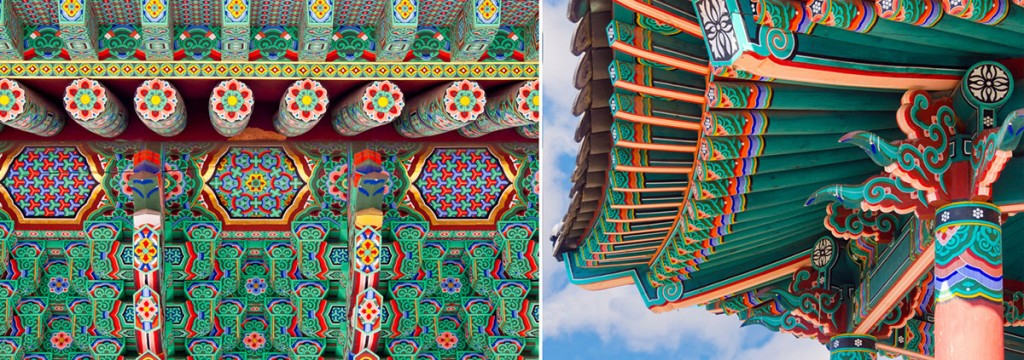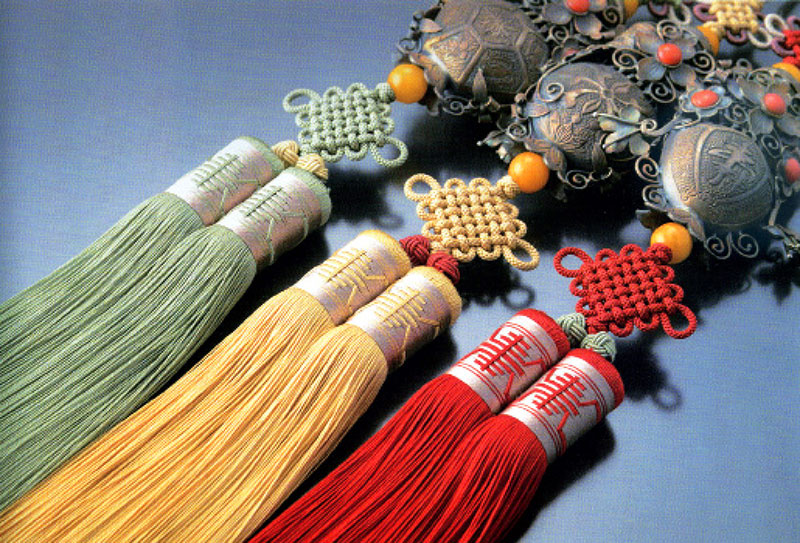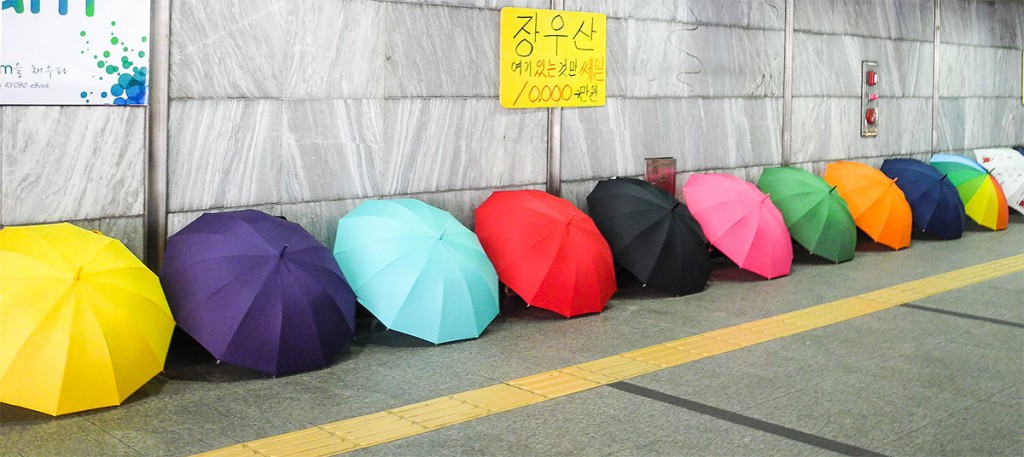

The very first time I went to Korea in 1985, in connection with my son’s adoption, I spent a week there and had a chance to explore. Never having been there before, it was all absolutely new and fascinating to me. My most vivid memory of that trip, other than the time spent at Eastern Social Welfare Society, was of color. Bright, varied, iridescent color. The markets and shops were full of it, the traditional buildings were full of it, the streets were full of it. I was first stunned by the temple painting and have never forgotten nor felt less attracted to it than I did then. It was beautiful and vibrant, and I took dozens of pictures. In 100 Thimbles, in our chapter on Painting, we write:
Dancheong is the name used for a style of embellishing temples and palaces with elaborate, brightly colored, painted designs. The five symbolic colors related to the Five Elements—red (fire), blue (wood), yellow (earth), black (water), and white (metal)—are used, together with green and some neutral tints . . . There was a definite sequence to the colors and how they were applied, following a code derived from Buddhist symbolism. The designs incorporated symbols of protection and good luck and represented heaven, earth and resurrection.
Then there was the fabric market. At the time, I thought it must all be silk, but now I know that it contained not only silk, but a variety of fabrics including linen, ramie, and cotton as well. It was all incredibly beautiful—aisle upon aisle of booths filled with rolls of fabric in what seemed like a thousand different colors. Again, I took dozens of pictures, but even without those images, I remember it clearly.
Finally, from that first trip I also remember norigae in the markets and shops—the beautiful knotted handicrafts with tassels. I had no idea what they were at that time, but they fascinated me with their intricate knotwork, beautiful colors, and (sometimes) beautiful metal and stone attachments.
The most well-known type of maedeup (ornamental knotwork) is the norigae—a beautiful knotted piece with a tassel, meant to be worn hanging from the tie of a woman’s hanbok. A norigae consists of three parts: the knotwork, which is always vertically repetitive and symmetrical; the tassel, which can be made from cord of varying thicknesses; and the ornament, which is made from precious metals and stones such as gold, silver, bronze, jade, amber, coral, pearl, or malachite.
I saw color on every street in Seoul, and I came away loving that aspect of the country and the culture. I brought many, many pictures home with me—in my camera and in my memory—that remain with me to this day. Those pictures drew me back over and over, and I’ve spent the last almost 30 years learning more about the Korean crafts that charmed me on that first trip. Surely, indeed, a picture is worth a thousand words.
~ Joan



